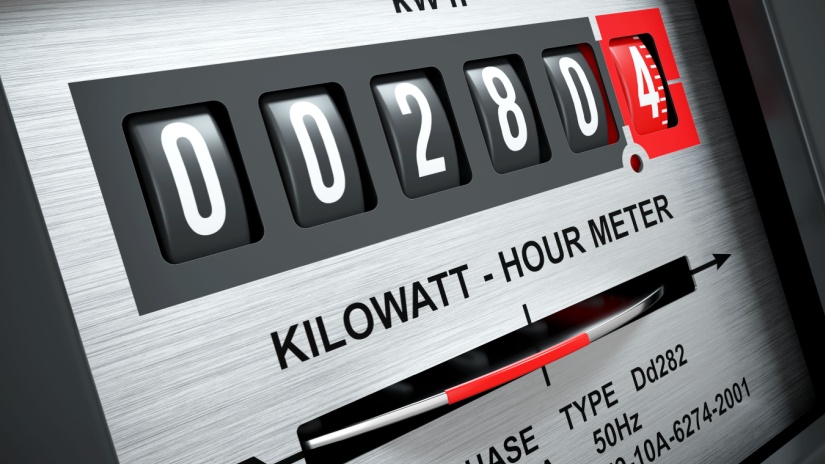Knowledge Centre
What is a single rate tariff?

Navigating an energy bill can often feel like decoding a cryptic puzzle for many Australians. Among the perplexing jargon lies a crucial detail: your energy tariff. Understanding this can significantly influence what you are paying for power.
Enter the Australian single rate tariff: a straightforward option amidst the array of electricity pricing structures.
Unlike time of use and controlled load tariffs, which vary based on when and how much electricity you use, the single rate tariff offers simplicity. It provides a uniform rate for electricity consumption regardless of the time of day.
In this guide, we take the confusion out of the single rate tariff. Understanding your tariff isn't just about deciphering bills: it's about managing costs effectively and optimising your energy usage.
So, what is the single rate tariff?
A single rate tariff, also referred to as a 'peak', 'anytime', or 'general usage' rate, is a straightforward pricing structure offered by energy providers.
Unlike time of use tariffs that differentiate between peak and off-peak periods, a single rate tariff charges the same price for electricity consumption regardless of the time of day.
This type of tariff consists of two main components:
- Usage charge: This is based on the amount of electricity consumed, typically measured in cents per kilowatt hour (kWh).
- Daily supply charge: This fee covers the cost of being connected to the electricity network and is applied on a daily basis.
Single rate tariffs are designed to simplify billing and are generally cheaper than the peak rates of time of use tariffs, especially beneficial for households that consume most of their electricity during peak periods, such as weekday evenings.
This tariff structure is versatile and can be used with various meter types, offering flexibility to consumers regardless of their energy usage patterns throughout the day.
Is choosing a single rate tariff a good idea?
Choosing a single rate tariff can be advantageous if your energy consumption peaks during typical evening hours from Monday to Friday or if you frequently use appliances like washing machines and dishwashers during these times.
This tariff option, often referred to as a flat rate, standard rate, anytime rate, or peak rate, offers a consistent pricing structure throughout the day without the need for a smart meter.
This simplicity makes it easier to budget and manage your energy expenses, catering to households with predictable usage patterns during standard operating hours.
Which are the cheapest single rate tariff plans?
Finding the most cost-effective electricity tariff involves more than just comparing rates. It’s crucial to consider whether you’re on a standard or market offer, and if your energy provider offers incentives like pay on time discounts. The ‘cheapest’ tariff varies depending on several factors, such as:
- Your peak energy usage times, such as evenings on weekdays or weekends.
- Usage patterns of household appliances, like running a dishwasher between 10 PM and midnight.
- Whether you can benefit from ‘peak’ and ‘off-peak’ rates, typically available with a smart meter.
- Use of large appliances like pool pumps or underfloor heating that may require controlled load tariffs.
To learn the best-value energy plan in your state, reach out to our Compare Energy team based in Australia. They have insights into the most economical energy plans available, tailored to meet your specific needs.
Is single rate the only tariff?
Apart from single rate tariffs, there exists a variety of other electricity tariff options that cater to different energy consumption patterns. If being on a single rate tariff is not for you, you’re not stuck.
The other tariffs include:
- Time of Use tariff: This tariff structure offers varying rates based on the time of day. Typically, electricity is cheaper during off-peak hours such as late at night and early morning.
- Block Rate tariff: Designed for gas customers, this tariff sets different prices for each daily or quarterly 'block' of energy usage.
- Controlled Load tariff: Tailored for large household appliances like hot-water systems, these tariffs offer lower electricity prices during specific off-peak hours when the appliance operates on a separately metered circuit.
- Feed-in tariff: If you have solar panels, this tariff allows you to earn credits for excess electricity your system feeds back into the grid.
Availability of these tariffs varies by state and may depend on your chosen energy retailer. Additionally, some tariffs require specific metering capabilities to be eligible. Exploring these options can help you find a tariff that best matches your energy usage habits and goals.
Should you choose a single rate tariff?
This tariff structure typically offers a more economical rate compared to the peak rates found in other tariff options, potentially reducing your overall energy expenses.
On the other hand, if you prefer to benefit from shoulder or off-peak rates, especially with the use of a smart meter, a time of use tariff might better suit your needs. It allows for varying rates based on the time of day, offering potential savings during less busy periods.
It's important to note that single rate tariffs are universally available from all electricity providers, regardless of your location. Understanding your household's energy consumption patterns can help determine which tariff type aligns best with your budget and lifestyle.
Contact Compare Energy
One of the best ways to ensure that a single rate tariff is the best rate for you is to call our Aussie-based call centre on 1300 790 106. Our team can talk you through which of our retailers can offer you the best single rate tariff in your state.

